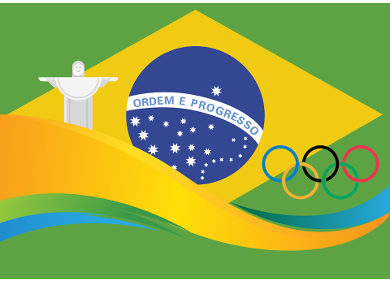The 2016 Olympic torch is made from recycled aluminium and resin with a satin finish. It weighs 1.0–1.5 kg and is 63.5–69.0 cm high. It expands to full lenght when it comes into contact with the flame.
When extended, the torch shows five blue and green vertical sections. Together with the yellow flame, they represent the sea, mountains, sky, and sun. In addition, they are also the hues found in the Brazilian flag. The triangular shape of its shaft refers to the three Olympic values of excellence, friendship, and respect. The torch was designed by studio Chelles & Hayashi, São Paulo, Brazil.
The bottom of the torch contains a small fuel tank for liquid gas. When the torch is turned on, a sudden pressure drop causes the gas to vaporize. It flows through a tube in the handle of the torch to fuel the fire at the top of the torch. To generate the flame, gas burners are used.
On August 5, the torch relay ends when it lights the Olympic Cauldron at Maracanã Stadium, Rio de Janeiro, Brazil. The relay started on April 21st. An Olympic torch relay has only existed since the event in Berlin in 1936 where Krupp provided the 27 cm long stainless steel flares that were fired with burning magnesium. Since 1952, gas burners are used to produce the flame. Torches can widstand wind, rain and heat, and drops of up to 3 m. They have to burn at least ten minutes.
- More on the symbols of the Torch at: rio2016.com/en/torch-about
and in a video at www.cnet.com/news/rio-olympics-torch-undergoes-extreme-torture-test-with-saws/
Also of Interest
- The Chemical Journey of the Olympic Torch,
ChemViews Mag. 2012.
DOI: 10.1002/chemv.201200086
Each of the 34 designs of the official Olympic torch has relyed on chemistry to stay alight throughout the torch relay




